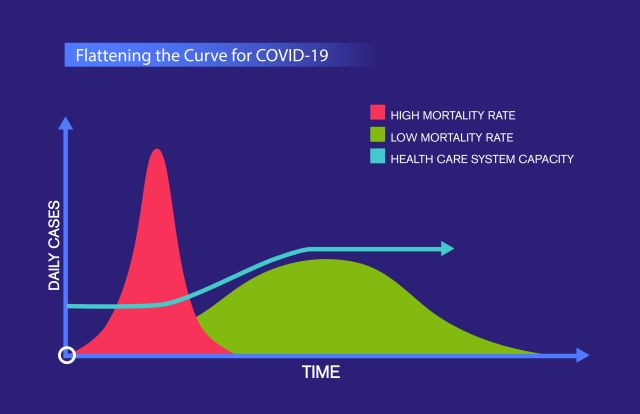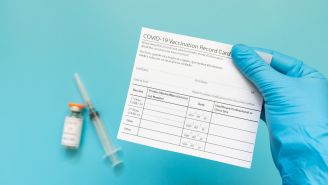Updated on April 1, 2020.
As confirmed COVID-19 cases spike across the United States, health officials are constantly urging Americans to stay home and maintain social distancing to help “flatten the curve.”
But what is a curve, and why is flatter better?
The term may be new to you, but “flattening the curve” has long been used by epidemiologists, the science community’s so-called disease detectives.
An epidemic curve represents the progression of an outbreak. It reflects the number of people who become sick over a set period of time.
So, a very steep curve shows that many people are being diagnosed around the same time.
A flatter curve, on the other hand, suggests that the number of new cases of a particular illness are spread out over a longer period of time—not spiking sharply.
Why is “flattening the curve” so critical right now?
COVID-19 is currently spreading like wildfire in the United States and other parts of the world. Efforts to “flatten the curve” are intended to slow its spread.
This is essential for one very important reason: It will save lives.
If left unchecked—and we fail to flatten the curve—the number of people who become sick with COVID-19 simultaneously will surge and overwhelm already taxed hospitals facing dire shortages of beds and essential medical supplies.
So far, most people who are infected with COVID-19 get better on their own. Only about 16 percent of COVID-19 cases result in severe illness and complications, including pneumonia and trouble breathing.
But keep in mind, as the tally of confirmed cases continues to climb, the number of severe or fatal cases already includes thousands of people.
And the latest data from the Centers for Disease Control and Prevention (CDC) shows that nearly 40 percent of those sick enough to be hospitalized from COVID-19 in the U.S. are between 20 and 54-years old. That means even many younger adults are relying on life-saving medical equipment, occupying intensive care unit (ICU) beds and needing skilled medical care.
If hospitals and urgent care centers are burdened with a high volume of patients, the care given to those with severe disease or complications may be compromised. There will not be enough ventilators and other life-saving equipment to go around, potentially forcing doctors to choose which patients to save.
This tragic scenario has already played out in Italy.
If everyone adheres to urgent calls for social distancing to help “flatten the curve,” it will help curb the pandemic and save lives by giving public officials and healthcare workers more time to respond effectively to the developing situation.






